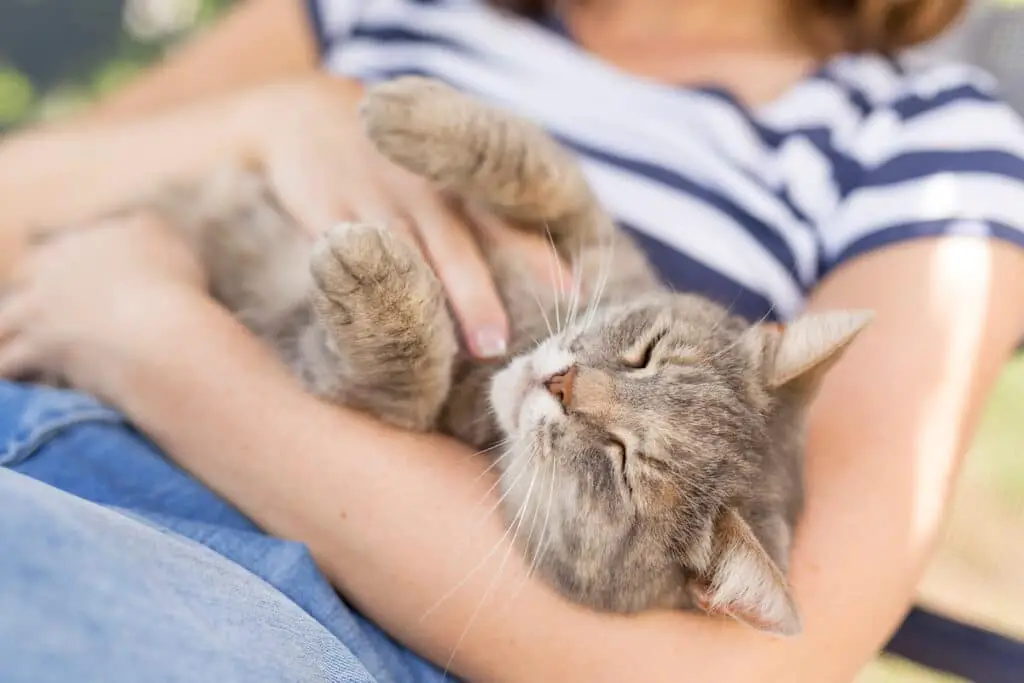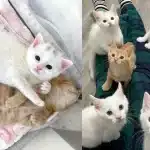Cats don’t always purr, but it’s not necessarily something you should be worried about. Normally, cats purr to show their happiness and bring you closer to them. But some cats just don’t purr due to physical or psychological reasons.
Cats Don’t Always Purr
All domestic cats typically purr on a regular basis throughout the day; however, occasionally your cat might not. As individuals, cats will all purr in different tones and volumes; therefore, some cats will purr more subtly and covertly than others. Some cats need longer to come out of their shell and become at ease and comfortable enough to start purring around their owners if they are fearful, insecure, worried, or new to a household.
Problems with the larynx
Some cats do not purr, despite the fact that it is not very prevalent. Although we are not certain of the cause for sure, it might be because of a little anatomical change in their larynx. Your cat will typically find different means of communication in these situations, such as altering body language or facial expressions. Please don’t worry; even if your cat doesn’t purr, they are still OK. If your cat used to purr frequently but has since stopped, it may be an indication that something has happened and they need to see your normal vet. A sudden cessation of purring could be a sign that your cat is under stress, hurt, or ill.
Your cat won’t always purr if they’re unhappy.
Since a purr often denotes happiness, if your cat suddenly stops purring, it may be an indication that they are unhappy, possibly stressed out, and maintaining a high level of alertness, making it difficult for them to fully unwind and feel satisfied as usual. Changes in the home, their regular schedule, or other stressful situations might make cats anxious and reduce their purring. Cats will get anxious and sad due to medical conditions like pain or illness, which will sometimes cause them to purr less. Despite the fact that, as was already said, certain cats may purr to help with pain management,
Cats won’t always purr if they have swelling and other health issues
Inflammation, growths/swellings, and other changes to the vocal cord area can be brought on by medical conditions that are particular to the mouth, pharynx, larynx (vocal cord region), and trachea. A change in your cat’s purring volume or pitch, or an odd sound accompanying the purr, can occasionally also imply an issue. Sometimes, this can cause pain during purring, which causes them to stop. It can also disrupt the vibrations of the vocal cords, resulting in a different sound and tone of the purr.
We advise consulting your local vet if you detect an abrupt shift in the tone or loudness of your cat’s purring, particularly if it is accompanied by other behavioral changes or symptoms.
Should I be worried that my cat doesn’t purr?
While purring is something that cats do most frequently, some cats just don’t. Your cat may simply not be able to make a purring sound due to physiology, such as a problem with their voice cords or respiratory system. However, if your cat had been purring frequently but suddenly stopped, and you’d also observed other symptoms or a change in behavior, we’d advise contacting your neighborhood vet to see if there’s a problem.
Can I teach my cat to purr?
If your cat has never purred, it may be difficult to educate them because it is simply not physically possible for them to do so. If your cat can purr, though, there are some behaviors that can encourage it. Cats can be encouraged to purr to convey happiness and fulfillment. It can be beneficial to massage, softly scratch, cuddle, and otherwise make your cat feel at ease by easing any tensions and establishing trust in order to get them to purr. To be confident and express themselves, they will need a reason or desire to want to purr. They also need to feel safe and at ease with you.
Your cat will probably purr in contentment if you stroke it in places it appreciates, such as behind its ears, beneath its chin, or on its back. When they are sleeping or resting, cats also frequently appreciate being cuddled and stroked, as well as hearing lullabies or being spoken to softly. Purring can also be induced by providing your cat with plenty of soft surfaces, bedding, and a stress-free environment in addition to the aforementioned measures.
Other Ways Your Cat Can Communicate With You
Like the majority of domesticated animals, cats have modified their behavior to interact with people, so it’s ok if your cat doesn’t always purr. They learn to communicate their sentiments, such as stress, satisfaction or contentment, by their body language and vocalizations. They even learn to request items they want, such food, cuddles, or playtime.
Meowing
Meowing is a clear method of cat communication that is solely used to interact with people. As a means of communication with their human family, cats create distinctive variants on the sound. Some cats acquire a wide range of tones and pitches as they learn to communicate with their owners over time. Meows and purrs are both well-known universal noises that cats use to express a variety of feelings, circumstances, and wishes.
Body Language
Another way your cat will talk to you is through body language. The most typical way a cat’s body expresses itself is through its tail. Like dogs, cats frequently display worry, stress, or fear if their tails are tucked between their legs and hung low. Combining this with a hunched over, low to the ground stance, flattened ears suggesting concern, and a defensive posture can be seen. In contrast to dogs, a tail that is waving or swishing frequently denotes agitation, frustration, or hostility.
Cats that are standing confidently and at ease, with their tail lifted high in the air and their tail fur smooth and flat, can sometimes be observed doing this when they approach their owners in an effort to engage and attract their attention. Your cat may be standing tall, facing the direction of the perceived threat side on, with their ears flat to their heads, puffed-up tails, and other body postures that make them “look bigger” as they feel intimidated and uneasy. An upright tail and puffed-up fur suggest your cat is instead distressed and scared.














